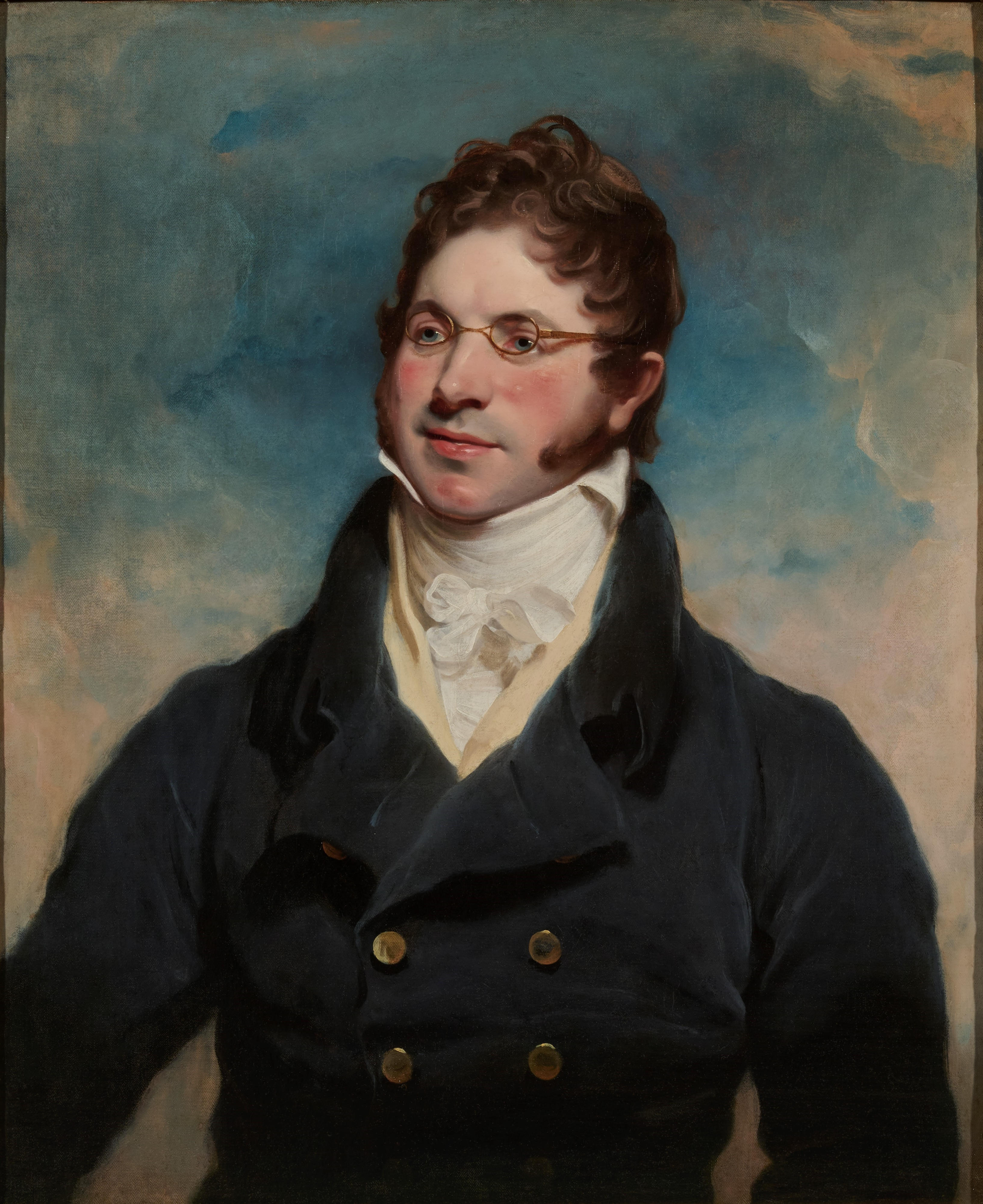Sir Martin Archer Shee P.R.A.
b. 1769, Dublin
d. 1850, Brighton
Portrait of a Young Man
early 1800s
Oil on canvas
79 x 63 cm (31 1/8 x 24 3/4 in.)
With frame: 99.5 x 87.5 cm (39 1/8 x 34 1/2 in.)
Description
Formerly attributed to the circle of Sir Thomas Lawrence, this portrait has more recently been correctly attributed to Sir Martin Archer Shee. The Irish painter and writer received a classical education before entering the Drawing Academy of the Royal Dublin Society. After leaving the Academy he practiced as a portrait painter in oil and pastel, taking his sitters from Dublin society. In 1788, on the advice of the American portrait painter Gilbert Stuart, Shee travelled to London where, despite useful introductions, he was reduced to making engraved copies for the publisher Thomas Macklin. His fortunes changed with the arrival of his cousin Sir George Shee, a rich Indian nabob, who obtained for him an audience with Joshua Reynolds, and in March 1790 he enrolled at the Royal Academy Schools.
His new self-confidence is evident in his Self-Portrait (1794, National Portrait Gallery, London), and he quickly moved through the ranks of the Royal Academy. In 1805 Shee published Rhymes on Art, or, the Remonstrance of a Painter, in which he argued for national patronage of artists. The book was well received and was instrumental in the establishment of the British Institution in 1807, and Lord Byron, in his English Bards and Scotch Reviewers of 1809 notes: “And here let Shee and Genius find a place / Whose pen and pencil yield an equal grace.” Shee’s early career was overshadowed by that of Thomas Lawrence, whom Shee modestly considered a far more talented artist. On Lawrence’s death in 1830 Shee succeeded him as President of the Royal Academy and in the same year received a knighthood. After his elevation to the presidency he painted several royal portraits including those of William IV and Queen Adelaide and Queen Victoria.
The present portrait shows a young gentleman half-length in a dark blue coat. The portrait is carefully finished, the likenesses rendered with brilliant touches of colour and marked by the artist’s tendency towards redness in the flesh. The elegant sitter wears a distinctive pair of small round glasses, suggesting that he might be a littérateur from a highly polished circle, with good tastes and scrupulous refinement. The same sitter is known in another portrait, in a virtually identical pose and in highland dress, though without glasses (Sotheby’s, London, 21 March 2007, lot 231). In this portrait, the gentleman wears a Stewart tartan and holds a metal sword. The costume suggests that the man is portrayed in the guide of Norval, a character from John Home’s play Douglas, one of the most popular tragedies in the mid eighteenth century. The play was presented in Edinburgh for the first time in 1756 and in London in 1793. Many famous actors of the period were portrayed dressed as the Scottish hero, including William Henry West Betty, Alexander Rae and Henry Erskine Johnston. Home’s theatrical hero remained extremely popular in the following decades, with portraits of young gentlemen in the role of Norval painted by Charles Leslie (RA 1814, no. 257), Huge Ross (RA 1824, no. 928), and H. Pidding (RA 1833, no. 580).
Shee was much engaged with the theatre throughout his life. In Dublin, he studied in the department of dramatic literature and later even penned a tragedy, Alasco, published in 1824. Some of his early portraits feature fixtures of the Dublin stage, and in London, he became acquainted with the actor and painter Alexander Pope, who introduced him other well-known actors of the day. The actor John Fawcett, for example, sat for two portraits by Shee, one in a dark coat with a white waistcoat (Sotheby’s, 15 January 1986), and another in the role of Touchstone in As you Like It, exhibited at the Royal Academy in 1797. In a letter to his brother, dated 1789, Shee noted that he was engaged in making copies for Thomas Macklin’s Gallery of British Poets and Boydell’s Shakespeare Gallery. At the same time, his pencil was employed to portray famous actors of contemporary theatre, including Macklin’s farce Love-à-la-Mode (1759), which became extremely popular in the early 1800s.
Shee painted hundreds of portraits and had sitters from all ranks of society, including men and women, noble and military men, actors, and poets. Though we do not know if the present portrait, and its tartan twin, shows an actor or a fan, it nevertheless attests to the vibrant cultural ambient, encompassing the literary, performing, and visual arts, of London in the first decades of the nineteenth century.
Please note that the price and availability of the above work are subject to change without prior notice.




